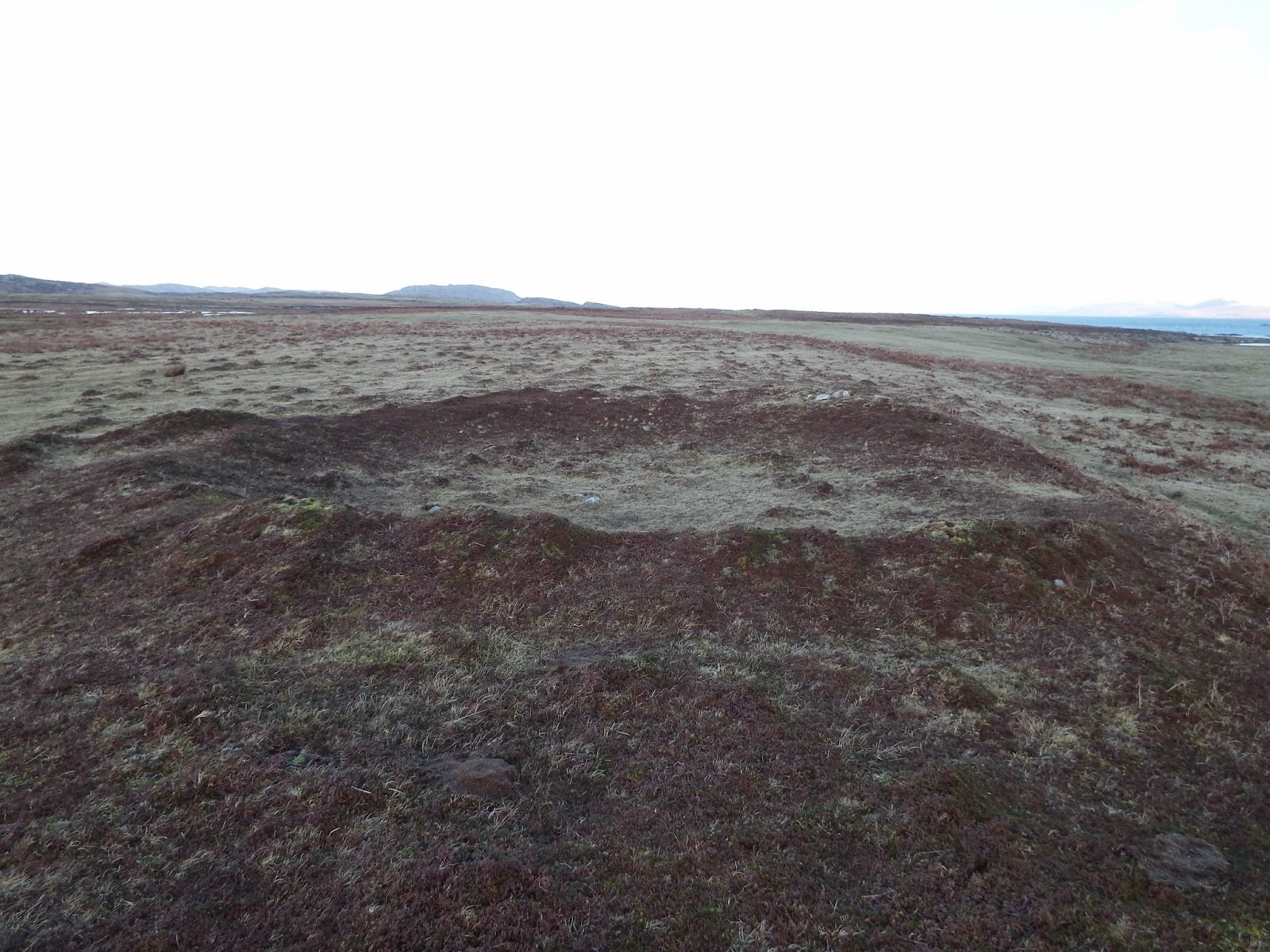I found something very special last weekend. A piece of hand worked flint. Probably not seen by human eyes for thousands of years. This archaeological treasure is likely to be from the Mesolithic period. Mesolithic hunters are believed to have started arriving to the area here around 7500BC. Flint doesn't occur naturally on Oronsay so this piece would have likely been traded.
Some preliminary research has revealed that this large flint was likely a scraper, used for working animal hides and other materials. I found it on the high water line down on the strand. Following the storms we've been having it perhaps came loose from somewhere on the strand and washed ashore. The strand would have been an area used by the people here without doubt for foraging for shellfish and molluscs in between the tides.

Signs of Mesolithic man are all around us on Oronsay. The middens here rank only 2nd in Britain for the amount of information added to our understanding of early post-glacial settlement. Carbon dating of the shell middens has shown that Oronsay was inhabited for at the very least 700 years between 4100BC and 3400BC.
The photo above shows one of the middens on Oronsay. One of the best examples in the whole of Europe. The team here fenced off the middens on the island in order to preserve and protect them. We've opened the middens up to the cattle for a couple of weeks in order to graze them back a little and provide lots of dung for the chough to search through for tasty invertebrate larva!
The middens have yielded some fascinating artifacts that let us glimpse the Mesolithic world on Oronsay. While their bulk is made up of limpet shells and blown sand. The middens have also been found to contain bone pins, seal, otter, red deer, pig and dolphin remains. The diet was evidently very varied. Avian species featured heavily on the menu too, cormorant, shag, goose, shelduck, water rail, ringed plover, tern, gull, razorbill, guillemot, gannet and red-breasted merganser bones have all been excavated from the middens.
Perhaps one of the most interesting finds for a budding ornithology fan are the bones of Great auk found in the middens. The now extinct species was eaten here on Oronsay which is just amazing to think of now. It is likely to therefore have been found breeding on Oronsay or on the surrounding coast.
Oronsay is a true window into our history and so many chapters can be seen in just a short walk around the island. The weight of heritage here can really be seen and I'm so fortunate to be living on such an archaeological gem.

















































